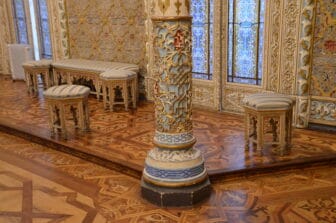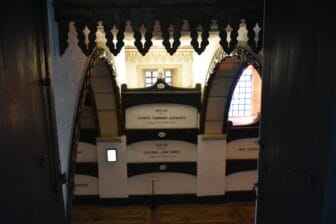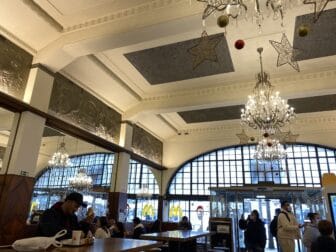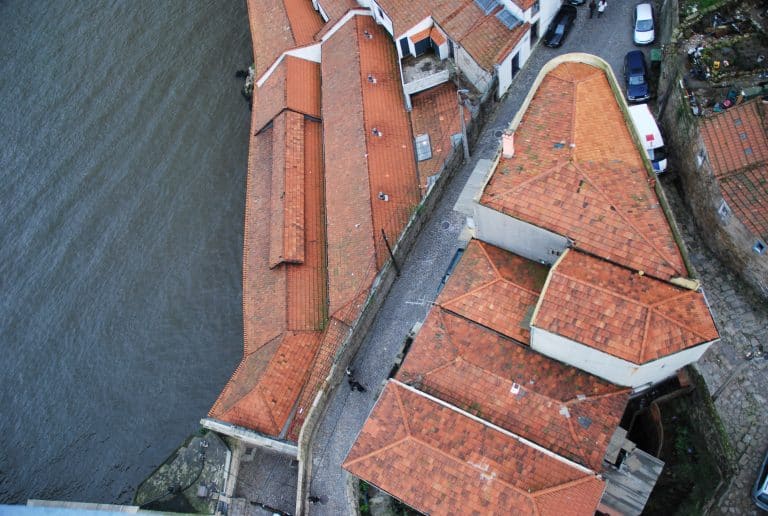


[Dec. 2009] After getting off the pleasure boat on the Douro River in Oporto, Portugal, we crossed the famous Dom Luis I Bridge to the opposite bank.
This bridge was designed by an apprentice of Eiffel who built the Eiffel Tower in Paris, and is said to have been completed at the end of the 19th century.
Sure, the iron skeleton was masculine yet graceful, and there were some similarities with the Eiffel Tower.
The bridge has two layers and we first crossed the pavement beside the lower motorway.
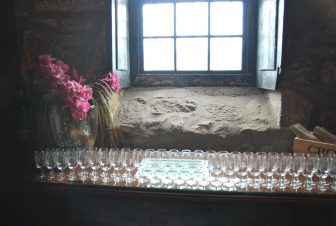
The other side of the river is called Vila Nova de Gaia district, which I thought was part of the city of Oporto, but to be exact, it’s a different town.
The area was lined with historic port wine factories.
The ticket for the pleasure boat we got on included a tour of the factory, so we looked for it (I don’t remember the name of it).
We found it and went inside, but unfortunately a big group tour was there and the place was occupied by them, so we could not hear any explanations and gave up on the way.
When you think of port wine, you think of red dessert wine, but there are quite a few white ones in Oporto.
The white one was also sweet.
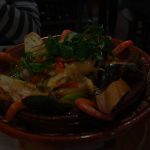
After giving up the factory tour, we found a crowded local restaurant.
We had something like a simmered seafood there.
This was absolutely delicious, the atmosphere of the restaurant was good, and we were very satisfied.
We saw some local funeral directors among the customers.
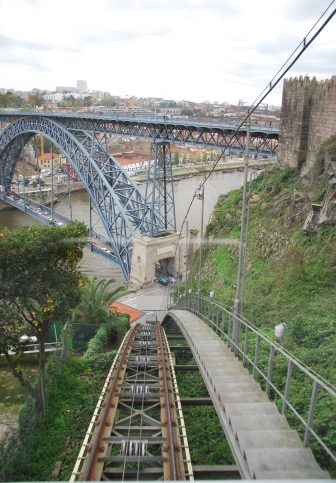
After the meal, we crossed the Dom Luis I Bridge again, and this time we got on the cable car that was running at the foot of the bridge.
Now we reached the upper layer of the bridge.
The cityscape of Oporto overlooking from this position was also picturesque.
Then, we took the pavement beside the train track for the Metro and headed to the opposite bank again.
The upper part of the bridge is 395 meters high, so you can overlook the town and the roofs of the port wine factories just below are photogenic.
It’s a pity that it wasn’t sunny, but I was able to take many pictures that I liked.
After being satisfied with going back and forth on the bridge, we walked around the town for a while, bought souvenirs, and went back to the hotel.
The hotel was in the center of the town, but after all it was a town with many slopes, and at this point I was tired, so we took a taxi.
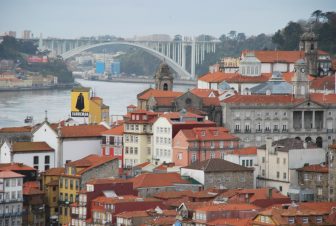
This driver was interesting.
Even if he knew that we didn’t understand Portuguese, he kept talking.
Along the way, he met a taxi driven by his son, chatted with him a bit, and then he explained that he had four children, one of whom had a food-related job in Angola, southwestern Africa.
I didn’t understand what he was saying at all, but my husband seemed to have understood for some extent, being a Latin language speaker.
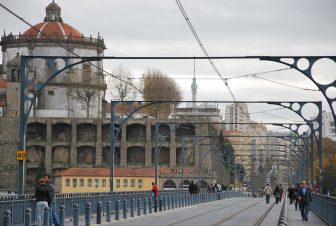
That night, just for a change, we went to a local sushi restaurant.
I thought that sushi would be good where the seafood was good.
My guess was correct, and we found some delicious sushi.
I’m glad that I can eat Japanese food above a certain level everywhere these days.
But the price was high, though.

